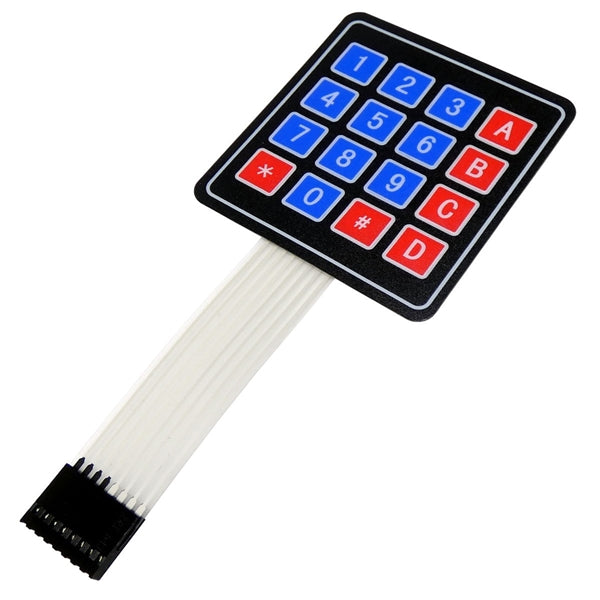Comprehending Membrane Changes: The Trick to Resilient and Trustworthy Controls

What Are Membrane Switches?
Membrane buttons are an innovative solution in the realm of user interface innovation, combining performance and style effortlessly. These tools act as a user interface between users and digital systems, incorporating several parts right into a compact format. Usually built from versatile, slim layers of materials, membrane switches are designed to respond to touch, enabling users to interact with machinery and electronic tools effectively.
The key components of a membrane layer button consist of a printed circuit layer, graphic overlay, and a spacer layer that prevents unintended activation. The visuals overlay can be tailored to mirror brand identity or user choices, boosting appearances while making certain use. Membrane layer switches are commonly made use of in different applications, including medical tools, customer electronics, and commercial tools, owing to their toughness and resistance to environmental factors such as dampness and dirt.
One of the key benefits of membrane layer buttons is their ability to withstand damage, making them suitable for high-traffic environments. In addition, they are light-weight and require marginal area, permitting ingenious designs in item advancement. On the whole, membrane switches over represent a practical and effective choice for modern-day electronic user interfaces, marrying innovation with user-centric design concepts.
Just How Membrane Switches Over Work
The procedure of membrane changes depend upon an easy yet reliable mechanism that converts user input into digital signals. These switches consist of numerous layers, generally consisting of a graphic overlay, a spacer layer, and a circuit layer. When an individual presses the button, the leading layer deforms, enabling a conductive component in the circuit layer to reach a matching conductive pad on the bottom of the graphic overlay. This get in touch with shuts the circuit and sends out an electronic signal to the gadget, showing that the button has been triggered.
The design of membrane switches can vary, however they usually incorporate domes or tactile elements to offer comments to the individual, improving the total experience - membrane switch. The products made use of in membrane layer buttons, such as polyester or polycarbonate, add to their resilience and resistance to environmental variables, consisting use this link of dampness and dirt. Furthermore, the printed circuits are generally encapsulated, which safeguards them from deterioration in time.
Benefits of Membrane Buttons

Furthermore, membrane switches are understood for their longevity. Constructed from robust materials, they are resistant to dust, moisture, and physical wear, which substantially prolongs their life-span contrasted to typical mechanical buttons. This durability makes them particularly suitable for high-traffic environments and applications requiring longevity.
Another significant benefit is the ease of cleaning and upkeep. The smooth surface area of membrane layer switches over minimizes dirt buildup and is often impervious to spills, making them ideal for settings that call for constant sanitization.
Additionally, membrane layer switches offer a streamlined account, causing a thinner style that can be integrated into numerous gadgets without adding bulk. This attribute not just improves the aesthetic allure however likewise adds to an extra ergonomic item design.
Applications of Membrane Layer Buttons
Flexible and user-friendly, membrane buttons discover applications across a vast array of sectors, including medical gadgets, consumer electronic devices, and industrial equipment. In the clinical field, these buttons are essential to devices such as analysis equipment, person tracking systems, and mixture pumps, where dependability and ease of cleansing are crucial. Their capacity to preserve and withstand extreme environments capability makes them perfect for such applications.

In customer electronic devices, membrane switches are made use of in products like microwaves, washing equipments, and remote controls - membrane switch. Their smooth layout enables user-friendly interface, enhancing the general customer experience while providing toughness and resistance to tear and wear
Industrial tools additionally gains from membrane switches, specifically in control panels for equipment and automation systems. These switches provide defense versus dust and moisture, making certain consistent performance in difficult settings. Their adjustable features enable producers to tailor them to specific operational requirements, boosting i thought about this effectiveness and performance.
Selecting the Right Membrane Layer Change
When picking a membrane layer button, it is vital to consider various factors that affect efficiency and viability for details applications. The key factors to consider consist of ecological conditions, tactile feedback, toughness, and layout specs.
First, examine the operating atmosphere; switches revealed to wetness, chemicals, or severe temperatures require specific products to make sure durability and functionality. Next off, review the demand for responsive feedback. Depending on customer interaction, some applications may take advantage of a responsive action to confirm activation, while others might like a non-tactile design for visual reasons.
Resilience is another critical variable; membrane buttons must be you can find out more designed to hold up against constant use, impacts, and abrasion. Make sure the selected button can endure the anticipated lifecycle, particularly in high-usage scenarios.

Verdict
In verdict, membrane switches over serve as necessary parts in the layout of durable and reputable control systems across numerous sectors. The flexibility of membrane changes permits for customized remedies that satisfy certain operational demands, strengthening their importance in modern-day innovation.
Membrane layer switches over stand for an important facet of modern interface style, blending capability with strength in various applications.Membrane buttons are an advanced service in the world of customer interface technology, integrating performance and design perfectly. Typically constructed from versatile, thin layers of products, membrane layer buttons are created to respond to touch, allowing individuals to engage with machinery and electronic devices efficiently.
The design of membrane buttons can vary, but they frequently integrate domes or responsive aspects to provide feedback to the user, boosting the overall experience.In verdict, membrane changes offer as vital parts in the design of sturdy and dependable control systems across numerous sectors.